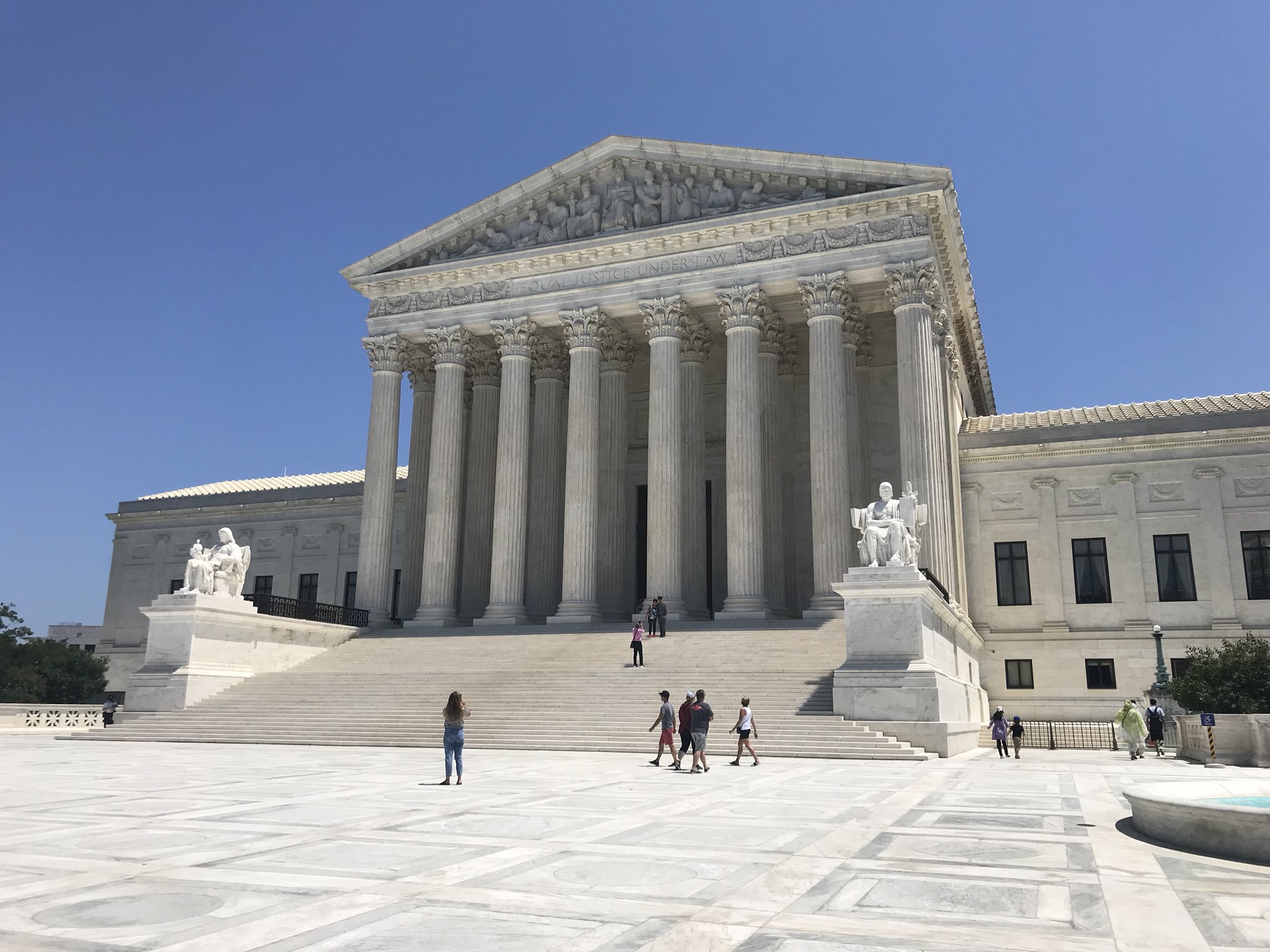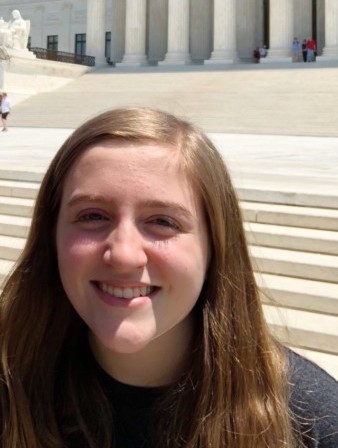Sign up for the daily CJR newsletter.
Anna Salvatore, a 16-year-old from Pennington, New Jersey, has many passions. She loves baseball; the Yankees are her team, but she’s also a fan of the Trenton Thunder, in the minor leagues. She loves to read; she used to be into dystopian fiction, now it’s political books. She loves newspapers, too—the ink on your fingers kind—and she’s an editor on The Bulldog Reporter, her school’s paper. But maybe most of all, she loves the Supreme Court. She loves it so much that she started High School SCOTUS, a blog written entirely by teens.
The idea was born, like all great ones, of boredom. In May 2017, during a study hall period, Salvatore—who wears her hair parted to the side and, on special days, an Apple watch—read an article in The New York Times about Maslenjak v. United States. “That was a really interesting case about what kind of false statements are relevant when applying for citizenship,” she recalls. The story linked to a 71-page brief. She didn’t have anything else to do, so she read the whole thing.
“I was hooked,” she says. “I didn’t expect to understand the arguments, but I kind of did.” Salvatore started reading all she could about the Supreme Court, including the transcripts of oral arguments. She dove into Obergefell v. Hodges, which in 2015 struck down states’ bans on same sex marriage, and Marbury v. Madison, the 1803 decision that gave the court the ability to veto an act of Congress. “When you don’t know anything about something and all of a sudden you start learning, it’s like your knowledge is exploding,” she says.
Her parents (a psychiatrist and an orthodontist) were supportive, if bewildered. (“In high school and college I was also fascinated by the Constitution,” her dad wrote in an email to CJR. “But clearly, she’s taken this to a whole other level.”) Salvatore says, “I probably annoyed them with so many Supreme Court facts. But I had no one else to talk to about it and I was going a little crazy.” Her friends are the “smart kids” at school, but they didn’t get it, really. “That’s one of the reasons I started my blog,” she explains. “At the very least, I could get my thoughts on the page and maybe someone would comment.”
She set up a site on WordPress. (Her parents helped with the hosting fees.) Early on, she focused her posts on cases that impact teens, like Hazelwood v. Kuhlmeier, the 1988 decision that allows school principals to censor articles in student newspapers. But those pieces weren’t attracting many readers. So she pivoted, and got into news aggregation and analysis. She also started an interview series with the likes of Linda Greenhouse, who for decades covered the Court for the Times; Adam Liptak, the current Times Court correspondent; Carrie Johnson, NPR’s justice correspondent; Art Lien, an artist who sketches for the (adult) SCOTUSblog; and others. (Neal Katyal, a former solicitor general, approached her on Twitter requesting an interview; she obliged.) Her site gained more traction. She also found friends; a few other Court-obsessed teens reached out to her. Today, her blog hosts five contributors from around the country.
This week, Salvatore has kept a close eye on Brett Kavanaugh’s confirmation hearings. It’s been somewhat disappointing theater. “There is a little value in confirmation hearings where you can learn about who the nominee is as a person, their mannerisms, their judicial philosophy,” she says. “But at this point, we aren’t even learning that—I’m not sure we are going to learn anything substantial.”
She’s seen cooler stuff this summer. While in Washington, DC, for a journalism camp, David Feder, a clerk for Supreme Court Justice Neil Gorsuch, invited her for a tour. “I freaked out!” she recalls. “The courtroom has high ceilings, big magenta curtains,” she says. “There’s a lobby you can walk around in and see exhibits about the history of the Court. There is this big imposing hall and these busts of justices who have died.”
After the main walkthrough, Feder took her upstairs to see something she’d only heard rumors about. “I thought people were joking,” she says. But there it was: a basketball court. Games aren’t allowed during official court proceedings, but during down time, the justices and their clerks take a break from legal battle for pick up games. “The highest court in the land,” Salvatore joked. “It took me like eight tries to make a basket. It was awesome.”
Salvatore has more big plans: this fall, she and the High School SCOTUS team will meet up in DC to see a case, which will require getting in line as early as 3:00 am, she says, since only about 50 members of the public are typically allowed in. They’re hoping to get tickets to see Madison v. Alabama, a case about whether you can execute a person who has no memory of their crimes.
After that, who knows? She hopes to go to DC for college and keep writing (maybe there will be a College SCOTUS); she’s considering journalism as a career. Her dream is The New York Times, her favorite, but she also reads The Washington Post, Law Fare, and sometimes The National Review. “I’m wary of reading too many liberal sites,” she says. But she might aim for law school and, perhaps, a federal clerkship.
“People pay attention to Trump because he’s important and makes news,” Salvatore says. “They pay attention to senators. But they overlook the court because it’s quieter.” She adds, “Just because it’s quieter, it’s not less important. Just because the justices aren’t on talk shows every day, doesn’t mean they aren’t massively important to our daily lives.”
From the archives: Iowa high schoolers power statewide investigations
Has America ever needed a media defender more than now? Help us by joining CJR today.








